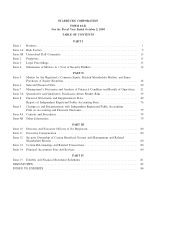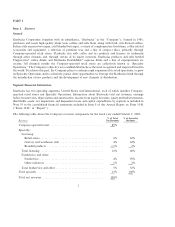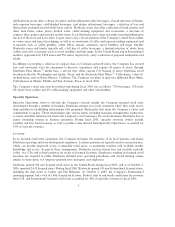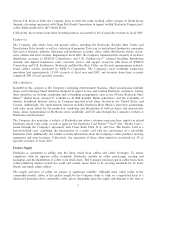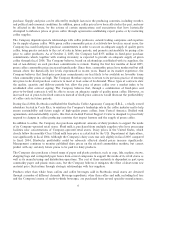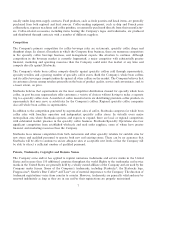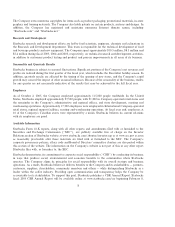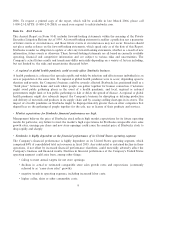Starbucks 2005 Annual Report Download - page 12
Download and view the complete annual report
Please find page 12 of the 2005 Starbucks annual report below. You can navigate through the pages in the report by either clicking on the pages listed below, or by using the keyword search tool below to find specific information within the annual report.‚ opening less productive stores and cannibalizing existing stores with new stores;
‚ shifts in sales mix toward lower-margin products;
‚ higher costs associated with maintaining and refurbishing the Company's existing base of Company-
operated retail stores;
‚ the impact of initiatives by competitors and increased competition generally; and
‚ failing to consistently provide high quality products and innovate new products and business processes
to retain the Company's existing customer base and attract new customers.
‚Starbucks is subject to a number of significant risks that might cause the Company's actual results to vary
materially from its forecasts, targets, or projections, including:
‚ declines in actual or estimated comparable store sales growth rates and expectations;
‚ failing to meet annual targets for store openings, as a result of delays in store openings or failing to
identify and secure sufficient real estate locations;
‚ failing to continue to increase net revenues and operating income in either or both of Starbucks United
States and International operating segments;
‚ failing to penetrate and expand into emerging International markets, such as China;
‚ failure of newly-opened stores to generate expected financial results;
‚ failing to anticipate, appropriately invest in and effectively manage the human, information technology
and logistical resources necessary to support the growth of its business, including managing the costs
associated with such resources;
‚ failing to integrate, leverage and generate expected rates of return on investments, including expansion
of existing businesses and expansion through domestic and foreign acquisitions;
‚ failing to generate sufficient future positive operating cash flows and, if necessary, secure adequate
external financing to fund its growth;
‚ declines in general consumer demand for specialty coffee products;
‚ lack of customer acceptance of new products;
‚ lack of customer acceptance of Starbucks products in new markets;
‚ increases in the price of high quality arabica coffee, dairy products, and other consumables, and the
Company's inability to obtain a sufficient supply of such commodities and consumables as its business
grows;
‚ failing to manage the impact of any adverse publicity regarding the Company's business practices or
the health effects of consuming its products;
‚ increased labor costs, including significant increases in worker's compensation insurance premiums and
health care benefits;
‚ litigation against Starbucks, particularly any class action litigation;
10


